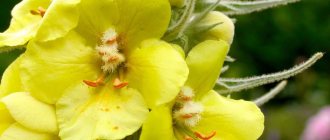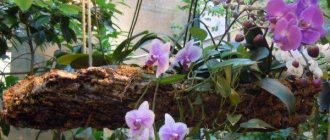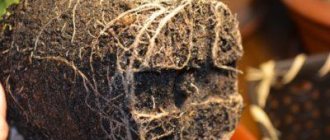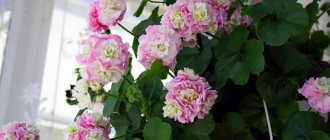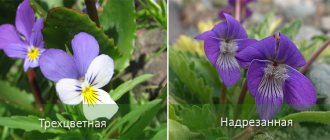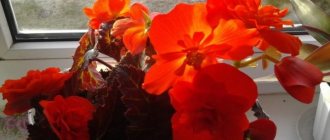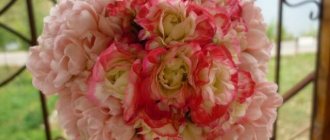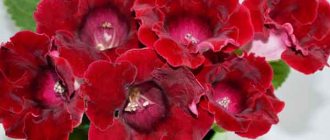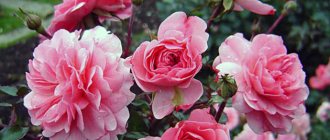In nature there are many different useful plants that can independently spread and grow in almost all areas. One of these medicinal herbs is mullein, a representative of the flora that belongs to the Norichinaceae family.
This plant has long been known in folk medicine for its medicinal qualities. Almost all parts of the herb are used to treat various groups of diseases, including pathologies of the respiratory system and gastrointestinal tract, skin and mucous membranes. Mullein is used both internally and externally, and has a small number of contraindications.
Chemical composition
The main healing effect of mullein is based on the fact that it contains high concentrations of iridoids, which are represented by harpagide and its acetate, as well as aucubin and catalpol. These compounds are antioxidant substances designed to slow down the aging process at the cellular level. Iridoids are capable of having an antimutagenic effect, which allows one to preserve genetic material and DNA chains intact. In addition, this group of substances has anti-inflammatory and immunostimulating properties, due to which the body’s protective function is strengthened, inflammatory processes, which are usually accompanied by swelling, fever and pain, are eliminated. Iridoids can also have a hypotensive effect and stimulate bile synthesis.
In addition to this group of substances, mullein also contains other valuable components. Thus, mucus was found in the plant, which has an enveloping, softening and protective effect on the mucous membranes. Mucus helps accelerate the healing of the mucous membrane of the digestive tract, and also improves the removal of mucus from the bronchi.
The sugars in the grass are broken down into glucose, as a result of which they serve as a source of energy for the human body. These substances regulate metabolic processes, stabilizing tissue nutrition and providing all cells with energy.
Saponins contained in mullein are highly active elements of chemical origin that help cleanse the lungs and normalize the production and excretion of urine. They are also characterized by anti-sclerotic properties and inhibit the development of cancer cells.
Flavonoids are intended to restore the normal functioning of the nervous system and improve concentration. In addition, this group of compounds increases the elasticity of the walls of blood vessels, protecting them from fragility. Also, these substances prevent atherosclerosis and improve peripheral circulation. They are characterized by anti-inflammatory and antimicrobial effects.
Essential oils stimulate the activity of the intestines and biliary tract, act as a sedative, and improve the removal of mucus from the lungs.
Mullein contains gums, which, when they enter the lumen of the digestive tract, act as adsorbents that absorb toxic substances. They envelop the mucous membrane, regulate appetite, restore intestinal microflora, and have an anti-inflammatory effect.
Thanks to the coumarins contained in mullein, the plant is endowed with antiseptic and astringent qualities, which helps stimulate the wound healing process. Also, these components have a moderate diuretic effect and prevent thrombosis.
This medicinal herb contains organic acids, which are also characterized by anti-inflammatory, antiseptic, antifungal and astringent qualities.
Tannin, found in mullein, is a tannin that has anti-inflammatory, anti-exudative and regenerative properties. In small concentrations, it ensures healing of the gastrointestinal mucosa and stool fastening; in high concentrations, it acts as an irritating element that enhances peristalsis.
The mineral composition of mullein is represented by K, Ca, Mn, Fe, Li, Mg, Cu and other components that take an active part in metabolic processes.
The product also contains vitamins such as retinol, tocopherol, and ascorbic acid. They are responsible for tissue renewal, are characterized by antioxidant properties, and strengthen the body.
Mullein flowers contain plant ash, which is endowed with anti-inflammatory and blood thinning properties.
Active ingredients
The corollas of mullein flowers contain up to 2.5% mucilage (and in the leaves up to 8%), which includes D-galactose, arabinose, D-glucose, D-xylose, L-rhamnose, D-mannose, uronic acid; 0.5-4% flavonoids (hesperidin, verbascoside, luteolin, apigenin, kaempferol, quercetin, rutin, chrysoeriol), polyphenolcarbronic acids (vanillic, ferulic, caffeic, hydroxybenzoic), triterpene saponins (verbascosaponin and others), carotenoids (α-cocetin , β-carotene), iridoid glycosides (aucuban, catalpol, isocatalpol), sugars (about 11%), up to 2.4% fatty acids (palmitic, linolenic, myristicic), essential oil, gum, malic and phosphoric acids, and others substances. In addition, the raw material contains macro and microelements: potassium (17.3 mg/g, magnesium (1.9 mg/g), iron (0.22 mg/g, manganese (49.2 μg/g), zinc (23 .6 µg/g), selenium (0.05 µg/g), etc.
What it looks like and where it grows
Despite the fact that the royal scepter, as mullein is also called, is a wild plant, during the flowering period it has a rather attractive appearance.
The stem of the grass is erect, covered with ashen hairs resembling thick fluff. The pointed leaves are about 15–30 cm long and about 5–10 cm wide. The leaves grow along the entire length of the stem, rushing upward.
Bear's ear has small, bright yellow flowers. The plant blooms from the second year of life. This herb is found in almost all regions of the world, but its natural distribution area is Eurasia and the archipelagos of the Atlantic Ocean along Africa and Europe. Mullein is unpretentious to soils, grows freely and develops near roadsides, and can bloom in sandy and rocky areas. If the grass falls on black soil and other types of fertile soil, it begins to hurt and soon dies.
Kinds
The royal scepter is the highest of all varieties. Its flowering lasts the longest. In medicine it is used as an anesthetic. This type is most effective in the fight against hemorrhoids and lung diseases. In addition, this type of mullein has diaphoretic, expectorant and diuretic properties, which makes it possible to use it in the production of certain medications.
This type, like a bear's ear, helps to cope with inflammatory processes, and also dilates blood vessels and eliminates cramps.
Hybrid mullein is probably the most unpretentious. It is able to survive even in severe drought and severe frosts, but prefers open, sunny areas. The inflorescences have a rich yellow color, which are presented in the form of a panicle or spike. It has wound-healing and insecticidal characteristics.
Panicle mullein is easily distinguished by the presence of serrated leaves. This variety blooms throughout the summer. Used to lower blood pressure.
The densely flowered type can reach 0.8 m in height, is characterized by tomentose pubescence, the leaves have an oblong shape. It also blooms from June to August.
Purple mullein differs from its counterparts in that it is a perennial plant and has purple flowers. This species blooms for a short time - from June to early July. In folk medicine it is used to stimulate the heart muscle and improve intestinal motility.
Black mullein is distinguished by a spindle-shaped root; it can usually grow up to 1 m in height. The flowers are collected in bunches and emit a sweetish aroma that persists even in dried raw materials. Can bloom throughout the summer. For therapeutic purposes, flowers are used that can treat diseases of the respiratory organs.
The Olympic plant species is also perennial and can reach a height of 2 m. The inflorescences are small, the foliage is gray. The grass blooms only in July. The product is used as a remedy against ulcers.
Video:
beneficial properties of mullein Expand
Collection and storage
If you collect and dry medicinal raw materials incorrectly, it is very easy to lose their healing qualities. So, you can collect the plant only in dry, sunny weather, after the dew has evaporated. Fallen leaves should not be collected, as they no longer contain anything useful. Raw materials that lack calyxes of inflorescences will be of high quality.
When collecting grass, you need to ensure that the raw material does not turn brown; it must retain its golden color. You can dry mullein under a canopy or in a ventilated area. Dried herbs must be packaged in an airtight container.
The corollas of flowers are most often used for medicinal purposes. Common mullein (bear's ear) is usually collected as a medicinal product. It blooms from July to August.
Other parts of the herb, such as roots and leaves, are also used in traditional medicine recipes. Raw materials from one plant can be collected for a month, or even longer, since it has a fairly long flowering period. If you need to collect leaves or flowers, it is better to choose the end of summer for this.
Landscape design using Verbascum
Verbascum: flower photo
Verbascum can be used as a single plant to decorate the garden and for planting in groups. Any walls and fences can be decorated with Verbascum, which belongs to tall species and varieties. You can also decorate your mixboxer with them by planting them in the background or making a hedge out of them. Plants of low-growing varieties are perfect for the foreground or middle ground in flower beds; they can become a wonderful decoration for garden paths and borders.
Since verbascum is predisposed to self-seeding, it may appear where you would not expect to see it. But, this only makes the garden more natural.
Plants such as phlox, speedwell, delphinium, ornamental grasses, lupine, lavender, catnip and sage are perfect as neighbors. They will all look great together. You can plant them in the same flowerbed together with perennial poppies, aquilegia, lychnis, next to which verbascum will look impressive at the beginning of flowering, and with heucheras, Siberian irises, which will continue to decorate the flowerbed after flowering has ended. The purple flowers of verbascum will look good in contrast with the yellow and orange flowers of dahlias and eschscholzia.
Medicinal properties of mullein herb
First of all, it should be noted that the plant is used to treat bronchitis and bronchial asthma. Mullein is useful for catarrh of the respiratory organs, influenza, tuberculosis, especially when the pathology is accompanied by a painful cough, since the herb has expectorant properties. This helps to liquefy mucus and remove it from the respiratory tract. The plant is also used as a mild diuretic.
Mullein also has antispasmodic, anticonvulsant, astringent, hemostatic, enveloping, antifungal, antiseptic and wound-healing properties.
With the help of this plant, you can treat diseases of the mucous membranes in the oral cavity, stomach and esophagus, as well as in the intestines. Such plant raw materials can protect the mucous membranes from external negative influences, reduce pain, and relieve swelling. Mullein also fights influenza viruses.
For a long time, people have noticed that if you apply the flowers of a plant to the site of a bruise, it protects against the appearance of a bruise. If bruises have already appeared, you can tape flowers to the sore area, which will speed up the process of resorption of the hematoma. Consequently, this raw material is used in dermatology, namely for burns, frostbite, acne, eczema, and furunculosis. Recovery is ensured by improving peripheral circulation, which normalizes the flow of blood with all the necessary components to the site of injury.
Bronchopulmonary diseases, including obstruction due to bronchitis, laryngitis, and pneumonia, can also be cured with the help of mullein. In addition to the fact that bear's ear treats coughs, it also improves immunity and ensures quick recovery after a cold. The plant helps to cope with shortness of breath due to bronchial asthma, inflammatory processes in the oral cavity, such as stomatitis, periodontal disease, and gingivitis.
The rich vitamin composition helps eliminate swelling. Thus, the plant helps remove excess salt deposits from the body, while relieving acute inflammation in the joint. Mullein is recommended for use for arthritis, gout, neuralgia, and rheumatism.
The high content of mucus and tannins makes it possible to use the herb for gastritis, colitis of various etiologies, and lack of pancreatic enzymes. A popular raw material in the treatment of hemorrhoids.
In addition, mullein has a sedative effect, normalizing brain activity, stabilizing the nervous system, increasing stress resistance and concentration.
For women
In gynecology, mullein is often used. It is indicated for inflammation of the genital organs; during menopause, the product helps regulate high blood pressure and prevent the development of atherosclerosis. However, one should take into account the peculiarities of using this plant for medicinal purposes, since among the fairer sex there are a number of restrictions on taking such a herbal remedy. For example, you need to remember that mullein is contraindicated during pregnancy and breastfeeding, as it has irritating and tonic properties.
During menstruation and in the period after childbirth, even if the child is bottle-fed, it is also contraindicated to use this herb due to the fact that it acts as a blood thinner.
Mullein flower powder is used as a powder to heal cracked nipples. In this case, you should first treat these areas with an oily solution of retinol, fish oil or carrot squeeze. Bear ear oil can be used. If breastfeeding continues during therapy, you should wash the nipples with warm water before doing so.
In addition, in gynecology, scepter-shaped mullein is used internally in the presence of inflammatory diseases. In this case, you need to prepare a decoction of 1 tbsp. raw materials poured into a glass of boiling water. The resulting solution should be infused until cooled, after which it should be taken 1 tbsp. after meals three times a day.
During menopause, accompanied by atherosclerosis and hypertension, you can prepare the same infusion, only in this case you will need a more concentrated solution, that is, you will need 2 tablespoons per glass of boiling water. raw materials. Despite the fact that mullein solution is actively used for rinsing, douching should not be done with it, since herbs with a higher concentration of tannins are used for these purposes.
For men
In andrology, there are no recipes based on mullein intended for the treatment of diseases of the male reproductive system. However, due to the fact that disturbances in the functioning of the prostate gland are often accompanied by hemorrhoids, the plant can indirectly contribute to the treatment of this gland in the treatment of hemorrhoids. Thus, mullein will ensure an increase in the secretion of this gland.
Such herbal raw materials are one of the most effective ways to cure inflammation of hemorrhoids. Compared to a number of analogues, this product eliminates inflammation in these tissues faster than others, preventing bleeding and eliminating pain in the anus. Medicinal compositions are prepared from mullein, intended to destroy pathogenic microflora in this area. They help protect against the development of bacterial complications and irritation of the mucous membrane and skin. In this case, anal ulcers, erosions and tears are covered with a kind of protective film, as a result of which the recovery process is accelerated.
You can also do sitz baths. In this case, you will need to prepare a decoction. To do this, you need to take 50 g of dried flowers and 50 g of mullein roots. Pour the resulting mixture into 3 liters of boiled water and simmer over low heat for 20 minutes. Pour the resulting broth into a container suitable for sitz baths. When the liquid has cooled to 40 degrees, sit in the basin so that the entire anus is completely immersed in the medicinal solution. The procedure should last about 15 minutes. To get good results, you need to do such baths 3-4 times a week before bed. Procedures are prohibited in case of bleeding from inflamed nodes, since such a solution has a negative effect on the body and only worsens the condition.
For children
Recently, it has not been recommended to give children mullein for internal use, however, traditional medicine has preserved recipes for the preparation of medicinal compositions intended for the treatment of severe cough, whooping cough, inflammation of the bronchi and lungs with difficult sputum.
To obtain syrup, 1.5 tbsp is required. mix herb flowers with 2/3 tbsp. marshmallow rhizomes and boil them in 0.3 liters of water for 10 minutes. After this, filter the solution and mix it with a glass of sugar. Next, cook the mixture until a thick syrup is obtained. Give the finished product to children 1 tsp. 4-5 times a day for severe cough.
To prepare a healing decoction, you need 1 tsp. vegetable raw materials, pour 0.5 liters of water and boil for 1 minute, filter and drink 1 tbsp. three times a day after meals. Instead of water, you can add milk.
Reproduction methods
Mullein can be propagated by sowing seeds or rooting cuttings. The seeds remain viable for a long time and are resistant to frost, so they can be sown immediately in open ground. The plant also often self-sows. Due to the taproot, which goes deep into the soil, it is not worth replanting mullein. Therefore, sowing seedlings is not practical. In open ground, seeds are sown immediately in a permanent place. This is done in mid-May or later, when the average daily temperature reaches +13...+18°C. Shoots appear in 1-2 weeks. In the first month, seedlings grow very slowly. Later they develop quite quickly and do not require much care. Flowering is expected in the second year of life. It should be remembered that mullein is easily pollinated, so seedlings can be very different from the mother plants.
Cuttings help preserve varietal characteristics. Cuttings should be cut after the end of the flowering period (August-September), then the likelihood of successful rooting will be much greater. The main plant with root shoots is dug up and freed from the ground. The root is cut into several parts with buds or small shoots. The length of each rhizome should be at least 5-7 cm. The cuttings are laid horizontally in prepared holes. First, they are covered with a layer of sand 5 mm thick, and on top with earth to a height of 15-20 mm. A distance of 40 cm must be maintained between seedlings.
Mullein in folk medicine
- For bronchial asthma and diseased lungs, a remedy that requires 3 tablespoons is effective. raw materials, pour 500 ml of boiled hot water and infuse the mixture in a thermos. Divide the resulting amount of liquid into three parts, which you drink throughout the day.
- For the treatment of pathologies of the stomach and intestines, a remedy made from 40 g of dried flowers and 1 liter of boiling water is useful. Brew and let the mixture brew. Drink the prepared solution 50 ml every two hours.
- To make a soothing composition, you need to drink a flower decoction with the addition of a small amount of natural honey.
- As noted above, mullein has diuretic properties, hence it is beneficial for gout and kidney stones. To cope with these ailments, it is necessary to make a healing decoction. This infusion should be drunk in the morning on an empty stomach, and during the day before each meal. Take about 200 ml per day.
- For diarrhea, an infusion from the inflorescences of a flowering plant is an effective remedy. Take the product several times a day, 20 ml.
- Usually mullein is used in combination with other medicinal herbs. To obtain a diaphoretic solution, you need to mix 1 part each of the flowers of the royal scepter, black elderberry and mallow, as well as 2 parts each of linden and raspberry. Mix all ingredients, measure 1 tbsp. the resulting mixture and boil in 500 ml of water. Drink the resulting solution hot before bed.
- In the form of compresses and rubbing, mullein is used for radiculitis and rheumatism. To do this, pour 1 tbsp. raw materials 250 ml vodka. Let this mixture brew in a dark place for two weeks.
- For ulcers and purulent wounds, an ointment made from 5 parts of crop seeds and 10 parts of butter will be effective.
We recommend reading:
use of wild rosemary in folk medicine
Read
It's time to bloom
The common mullein flower has a bright yellow color. It is very small and delicate in appearance. Here is its structure:
- bract (has a pointed shape in the form of a lancet);
- peduncle (thick and short, attached to the solid axis of the inflorescence);
- calyx (has pointed lobes converging at the base);
- corolla (fifteen to twenty millimeters in diameter, yellow);
- stamen (there are only five of them, the front two are slightly thicker and longer than the others);
- pestle (in the form of short thin threads).
The royal scepter begins to bloom from the second year of life.
Types of healing compounds
Mullein is a raw material for the production of medicines used for various diseases. Based on this plant, decoctions and infusions are made for internal use, as well as products for external use. These compositions have immunostimulating, antiviral, analgesic and anti-edematous characteristics.
To obtain dosage forms, dried aerial parts are used, crushed to 5 mm, and roots - up to 3 mm.
Infusion
Mullein infusion is effective in the treatment of pulmonary pathologies, including pneumonia, asthma and even pulmonary obstruction.
To make a medicinal composition, you need to pour 1 dessert spoon of dried raw materials in the form of flowers with 200 ml of boiling water. Leave this solution for a quarter of an hour and then strain. Divide the finished product into three doses and drink before meals.
Tincture
Alcohol tincture helps with joint and muscle pain. Used as an external remedy for rubbing.
To get such a drug, you need 1 tbsp. mix dried raw materials with 10 tbsp. vodka. Let the mixture brew for three days in a dark place with occasional shaking. After the specified period, strain the liquid.
Decoction
A plant-based decoction is useful for the treatment and prevention of high blood pressure, atherosclerosis, cystitis, and diseases of the digestive system. The composition obtained according to this recipe can be used to rinse the mouth for stomatitis and sore throat.
To make the product, use 1 tbsp. pour 250 ml of boiling water over dried and crushed raw materials. Place this mixture on the stove and bring to a boil over low heat. Cook the mixture for two minutes. After this, the composition should sit for half an hour. Drink the filtered liquid three times a day, 1 tbsp.
Tea
To make healing tea, you need 2 tbsp. Mix the dried raw materials with boiling water and leave for several hours. Next, strain the mixture.
This drink will improve the functioning of the digestive tract. Mullein tea is used for constipation and diarrhea. In addition, it is able to remove toxins from the body.
If you have sleep disorders, it is recommended to drink mullein leaf tea before bed.
Oil
There is a popular belief that mullein can be used for urinary incontinence. In fact, such a remedy is used externally to eliminate ear pain, in which case the composition is instilled into the ear, as well as for joint pain, and the sore spot should be rubbed with oil. This mixture is also suitable for compresses for dry skin types and dry eczema.
To obtain vegetable oil, use 3 tbsp. Place fresh herb flowers in a glass container, pour in 100 ml of olive oil and leave in the sun while shaking daily. Repeat this procedure for a month, after which the remedy will be ready for use.
Ointment
Using mullein ointment, you can cure wounds that do not heal for a long time, festering, weeping and trophic ulcers.
To create such a healing remedy, it is necessary to crush the dried seeds of the crop to a powdery consistency. Mix the resulting powder with butter in a ratio of 1:2. Apply the prepared ointment to the affected areas under a bandage, doing it twice a day.
Contraindications
In addition to the positive therapeutic effect, verbascum can also have a negative effect. The main contraindication to the use of products based on it is associated with diseases caused by reduced blood clotting or allergies. The use of decoctions and infusions of its flowers is also contraindicated in the preoperative period. The use of a natural remedy is not recommended before tooth extraction, for women during pregnancy or breastfeeding, during menstruation and for children under 12 years of age.
When preparing homemade infusions and decoctions, care should be taken to carefully strain them to prevent the entry of small fibers that cover the leaves and stems. These villi, if they come into contact with the mucous membrane of the pharynx and esophagus, can cause severe irritation. The content of toxic substances in verbascum seeds makes their ingestion extremely dangerous to health.
In case of an overdose of mullein, a general deterioration in well-being and constipation are observed. In any case, the use of drugs based on it for medicinal purposes should be under the supervision of a physician.
Application in cosmetology
In cosmetology, the qualities of mullein are valued. After all, the plant has antifungal, softening, moisturizing, antibacterial, nourishing, soothing and antiseptic properties.
- To cleanse the skin, it is recommended to make an infusion of 1 tablespoon in the morning and evening. inflorescences and 100 ml of boiling water. Let the mixture brew for 30 minutes, then filter the liquid. Store the resulting composition in the refrigerator. Use the product for a long time, alternating with parsley infusion.
- To prepare a rejuvenating mask, you need to collect 1 tbsp. stamens from freshly picked flowers and grind them in a porcelain mortar. Mix the resulting pulp with 5 g of honey and 10 g of sour cream. Apply the resulting composition to the face for 15 minutes. After this, wash with warm water. You can use parsley decoction for this; it has bleaching properties. Mullein-based cosmetics can be used for no more than 10 days, then take a week's break, and then repeat the course.
- A moisturizing mask is prepared from 15 ml of flower infusion, 5 ml of natural honey and the same amount of olive oil. Apply this mixture directly to the face or soak a fabric mask in it and apply for 10–15 minutes.
- A decoction of mullein leaves and inflorescences can be used as a hair balm. In this case, the hair should be soaked in the healing infusion, covered with a cap for 30 minutes, and then washed in the usual way. The decoction can be used as a rinse.
- To speed up hair growth and eliminate dandruff, you need to mix 30 ml of infusion and 15 ml of burdock oil. Moisten your curls with the mixture. The product should act for half an hour, after which you need to wash your hair. This procedure should be repeated once a month.
- To prepare a body skin care product, you need to take a bath with 10 drops of royal scepter oil. This plant has a rich complex of useful substances.
We recommend reading:
use of bergenia in cosmetology
Read
Botanical description
Mullein is a biennial or perennial plant, although annuals are also found in nature. It has a strong taproot and an erect, almost unbranched stem 0.5-3 m high. At the base there is a rather dense rosette of basal leaves. The lower leaves have petioles half the length of the leaf blade. Sessile foliage is located higher up the stem. It is attached oppositely or in a spiral. The leaves have a single oval or heart-shaped leaf blade. Their entire surface, as well as shoots and flowers, is densely covered with felt pile. The shoots and foliage are dark green or gray-green.
From the second year of life, a long stem develops above the leaf rosette, which is topped with an inflorescence. A flowering spike consists of several tiers of buds. At the bottom there are bunches of 4-7 corollas, and at the top there is a bunch of 1-4 smaller flowers. The diameter of the corolla is about 2 cm. It consists of yellow drooping petals and has a tubular or funnel-shaped shape. Under the fluffy, wide-open petals are hidden 5 stamens, varying in size and shape. Flowering continues throughout the summer.
After pollination, a small oblong seed capsule ripens. It is also densely pubescent. Inside there are small oblong seeds. Their rough surface is yellow-brown.
